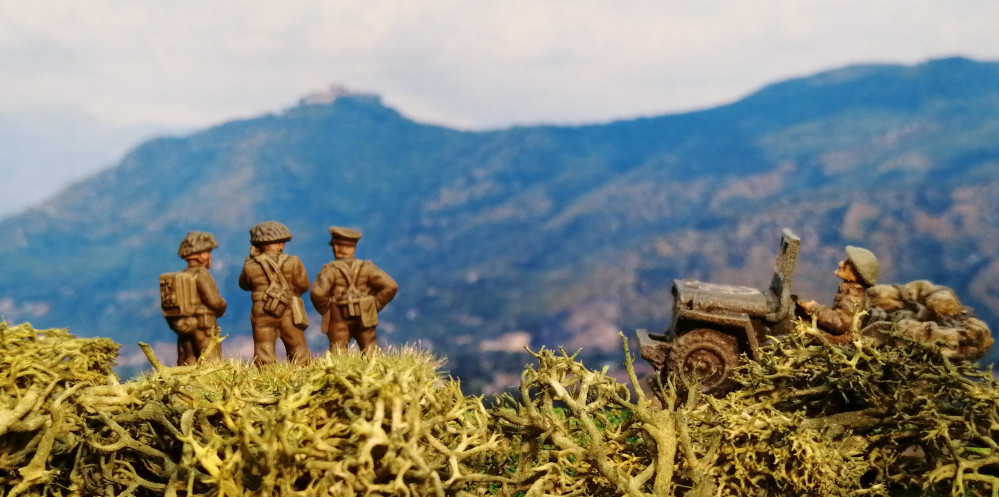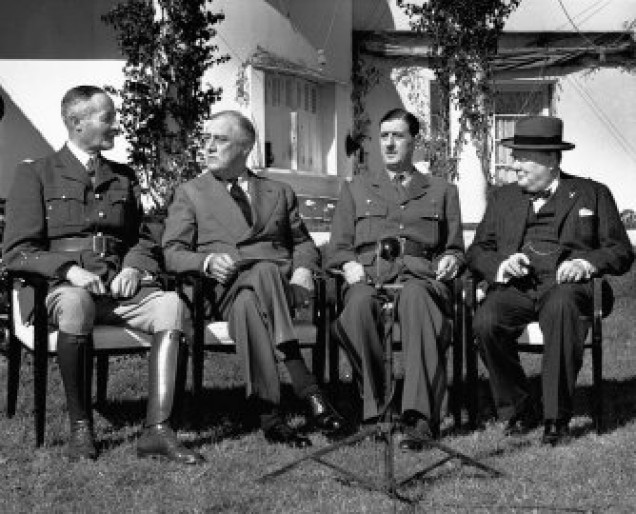
75th Anniversary of the Battle of Monte Cassino and Northern Italy (Gaming The Battles)
The Build Up to the Italian Campaign
The planning for an invasion of Italy started several months before the final defeat of the Axis in North Africa. During the Casablanca Conference in January 1943, British military chiefs pushed for an invasion of either Sicily or Sardinia. Indeed, Churchill himself was very supportive of the plan, famously calling Italy the ‘soft under belly of Europe’. Part of the British insistence came from wanting to protect the Southern Mediterranean and keep shipping lanes open, especially to British colonies in East Africa, India, Burma and Australia. Loss of the Med would mean extensive detours via the Cape of Africa. Furthermore, within the Med, and less than 100km from Sicily, lay the strategically important island of Malta. Malta had been under siege for most of the war and subject to constant air bombardment from Italian and German bombers based on Sicily. Holding Malta was key to maintaining Southern Mediterranean shipping lanes.
US Chiefs of Staff initially dismissed the invasion proposals as irrelevant and a diversion however were later persuaded otherwise, based primarily on the argument of maintaining safe shipping lanes. Allied commanders and politicians were also grimly aware of the situation in Russia and the invasion of Sicily would open a new front. This would have the effect of diverting German troops from the Russian front and alleviating some of the pressure on the Russians while also demonstrating to the Russians that they were capable and able to take on Germany on mainland Europe.
General Eisenhower was appointed Chief of Command and General Alexander was appointed Deputy CoC. Admiral Cunningham took command of the naval fleet while Air Chief Marshal Tedder was appointed Air Commander. There was much discussion around suitable landing sites and strategic planning with several options rejected. Montgomery’s proposal was finally agreed on calling for a two pronged attack with the US 7th Army, commanded by Patton, landing between Licata and Scoglitti on the Southern Sicilian coast. The British 8th Army were to land between Pachino and Syracuse on the Eastern coast. The plan was code named Operation Husky.
Allied commanders were concerned with the airfields in Sicily allowing the Axis’ air force to launch counter strikes against the troops as well as the supporting naval fleet. Prior to the invasion, Allied bombers relentlessly attacked the airfields and by the start of the invasion, all but two were rendered inoperable. To further confuse matters, the Allies set about ‘Operation Mincemeat’ that arranged for a corpse, dressed as a British Royal Marine officer and carrying a briefcase, to wash up on the shores of Spain. Inside the briefcase were detailed top secret plans for Operation Brimstone, the proposed Allied invasion of Greece. German high command accepted the papers as valid and diverted some troops to defend Greece rather than Sicily.
The Axis in Sicily
The Italian 6th army, commanded by General Alfredo Guzzoni, was tasked with the defence of Sicily and numbered around 200,000 men. About half this number were support staff and inferior coastal defence forces who were placed as a screen in front of the more experienced and better equipped field units. The general plan being for the field units to intervene when and where the coastal defence units required support.
Attached to the Italian 6th Army were around 32,000 German troops and 30,000 Luftwaffe ground support teams. The majority of these troops were part of the Herman Goring Panzer Division and the 15th PanzerGrenadier Division. In total, these two divisions could field around 150 tanks to support the infantry.











































































Leave a Reply